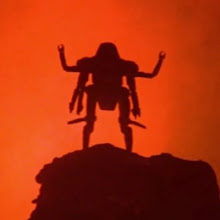
Not too long ago, those with an alleged conscience in the mainstream media debated the issue of what images, if any, were appropriate to broadcast in the wake of Saddam Hussein's execution. The botched execution was newsworthy, of course, but what standards, if any, does simple decency impose upon the modern mainstream media? How does the media balance that which is newsworthy with that which is appropriate to air? As society becomes more and more desensitized to violence, standards are lowered and then institutionalized. But with so many alternative sources of information these days, the mainstream media doesn't want to be scooped by some fly-by-night website, so mainstream journalists rush to air that which they might not have even considered airing only a few years before. What to do?
This is an old, and sometimes macabre, debate. Twenty one years ago today, on January 22, 1987, R. Budd Dwyer, an embattled Pennsylvania politician, took his own life in front of assembled journalists during a press conference. That very day, Paul Vathis, a Pulitzer Prize winning Associated Press photographer, offered this account of the awful scene:
I didn't think there was going to be a problem. Dwyer was passing out handouts. I was waiting for him to bring out the handout saying he finally had resigned. He was nearing the end of the news conference.
He took a blast at the press. We thought the news conference was about to end. He never said anything about resigning.
I was waiting for him to break down and cry. I was waiting for the emotional picture at the end of the conference.
Then he held up his hands when he saw some of the television people starting to take down their cameras and start to leave.He told the newspeople, "You don't want to take down your equipment yet."
Then he passed out three different envelopes to aides in the room. He called the people up, and I thought they were his letters of resignation.
He put his hand into the brown manila envelope, and I thought he was going to pass out handouts on his resignation. I took a picture of him with his hand inside the envelope.
Then all of a sudden I saw the pistol come out, and I started shooting pictures. He held the pistol in front of his chest with the barrel up. Then he held it outright, with his right hand straight out toward the right wall. And he put his left hand out, trying to stop people from approaching. Duke Horshock, his press secretary, was on his left.
When he pulled the pistol out, everybody started yelling, "Don't, Budd! Budd, don't!"I was standing on a chair between two television guys. Nothing went through my mind except to keep shooting.
Dwyer brought the pistol back and held it in front of his chest and put the barrel into the top of his mouth. And he pulled the damn trigger. I kept shooting my pictures during the whole sequence. I was shocked, personally shocked. From professional experience, I just kept taking pictures. After the bullet went in, it was a gory scene. He went straight down to the floor and went under the window, leaning against the wall.1
In those circles where such sinister things are celebrated, Dwyer's suicide has been referenced (and the audio has been sampled) in songs over the years (which no doubt causes pain to those family and friends if they chance across them). Filter's "Hey Man Nice Shot," about the Dwyer shooting, has an eerie and ominous feel to it (and for that reason was utilized in episodes of both "Homicide: Life on the Street" and "The X-Files," if memory serves).
It's certainly difficult to imagine an act more selfish than Dwyer's last. "You don't want to take down your equipment just yet"? He purposefully traumatized those assembled, and by offing himself in such a way, he must have made it impossible for his family and friends to fully recover from his death. How could they? When one's intentional death becomes some type of bizarre political theatre, family members and friends can never recuperate from it. But that is why the event is still being discussed a score and a year later.
1. "Painfully Close to the News," Newsday, (January 23, 1987).





4 comments:
I watched the video of Budd Dwyer a year ago by accident thru Limewire it was and still leaves me distrot after watching it I cannot explain which feeling is the strongest Saddness or Anger or Why and you can almost feel the pain from the penetration of the bullet
The photo that you have displayed of R. Budd Dwyer, was not taken by Paul Vathis, but by AP stringer Gary Miller. Who together with Vathis recorded Dwyer during that very sad day. Check your facts.
Anonymous, I don't think that the article actually makes the claim that Vathis took the photograph over Miller. It just uses the photograph, and then later quotes Vathis, who happened to be a photographer at the scene. If you could point me to the part of the post that you believe gives that impression, I'd be happy to clarify.
You can watch the video of his suicide here if you like.
http://deviantsockpuppet.com/content/budd-dwyer-suicide-video-ex-politician
it's way nsfw and very graphic. It is one of the craziest videos I've evr seen.
Post a Comment